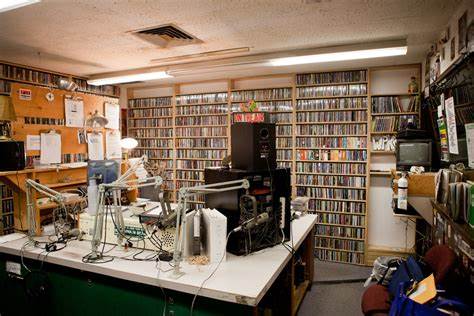This is the VOA Special English Education Report.
No two college radio stations sound alike.
(SOUND)
Some stations have a low-budget sound and students do all the work. Others, like WBRU at Brown University in Rhode Island, have a professional operation heard throughout their communities.
College stations play all kinds of music, from jazz to hard rock. Many also have news, including national or international programming.
More than three hundred college radio and television stations belong to a group called Collegiate Broadcasters Incorporated. CBI helps organize a National College Media Conference which this year took place in Washington. Hundreds of students, professors and media professionals were at the four-day event last week.
Warren Kozirenski at the State University of New York-Brockport is chairman of CBI. He points to WBRU as an example of a commercial station, meaning it earns money by selling time to advertisers.
The station is licensed by the Federal Communications Commission which polices the public airwaves. For example, the station could be fined if it broadcasts offensive language.
Many colleges and universities operate stations that are also licensed by the F.C.C but do not sell advertising. They raise money other ways, including donations from listeners. Stations like these including KTRU at Rice University in Houston are known as public broadcasters.
(SOUND)
College radio stations may receive money from the student government or their school administration. Warren Kozirenski says a majority have small budgets of less than fifty thousand dollars a year.
Some stations do not broadcast over the public airwaves so they do not have to follow F.C.C. rules. They stream their programming over the Internet or are heard through cable systems. Or they use low-power transmitters heard only on school grounds. Still, many of their adult advisers want the young broadcasters to act professional.
And that’s the VOA Special English Education Report, written by Jill Moss. I’m Steve Ember.
